
For the development of realistic trends in German painting in the second half of the 15th century, the linking of individual masters with the more purposeful in their advanced conquests of Dutch art revealing at this time is of particular importance.
In the works of these artists there is a tendency to image integrity, the compositional orderliness of the subordination of individual details to the whole. The largest of the masters of this kind was the Upper Rhine painter and graphic artist Martin Schongauer, known in the history of art primarily as an outstanding engraver.
The best work of Schongauer-painter, “Madonna in a Pink Gazebo”. This picture is one of the most significant works of the early German Renaissance. The artist depicts here a symbolic motif, beloved by late Gothic masters, but in his interpretation this motif does not contain anything naively idyllic, as, for example, in Lochner.
From the Gothic there remain a certain sharpness, angularity of refined nerve forms, ornamentality in the interpretation of flowers and leaves. According to the type of severe, severe face, the Madonna of Schongauer closely resembles the Madonna of Rogier van der Weyden. A new moment for German art, which gives this work a special significance, are definitely expressed in it are the search for thoughtful and logical orderliness.
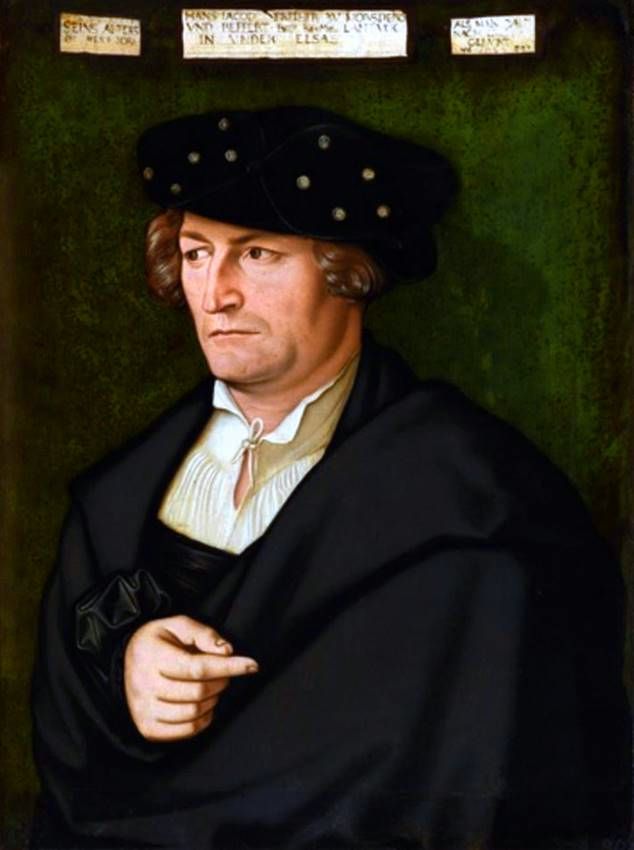 Portrait de Jacob von Morsperg – Hans Baldung
Portrait de Jacob von Morsperg – Hans Baldung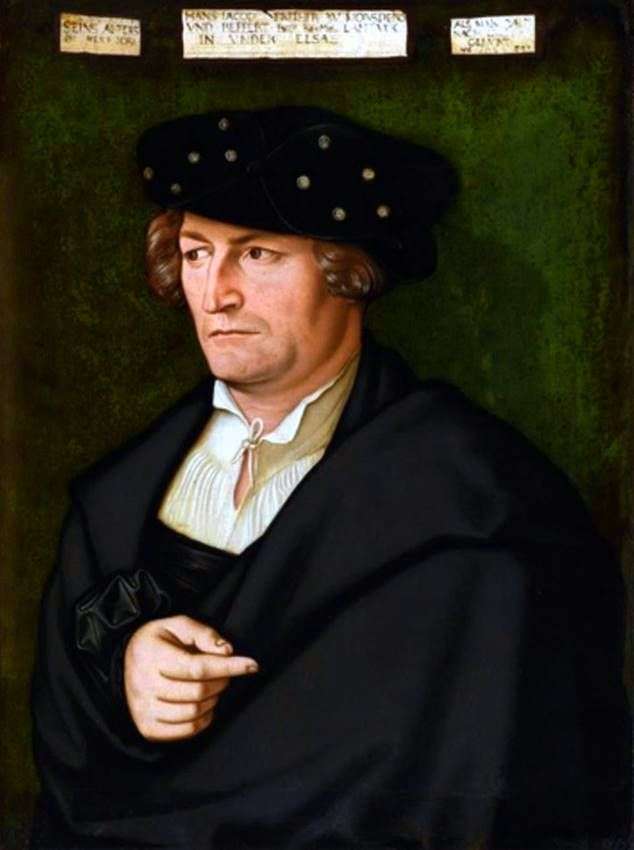 Retrato de Jacob von Morsperg – Hans Baldung
Retrato de Jacob von Morsperg – Hans Baldung Knight, young girl and death by Hans Baldung
Knight, young girl and death by Hans Baldung Death and the girl by Hans Baldung
Death and the girl by Hans Baldung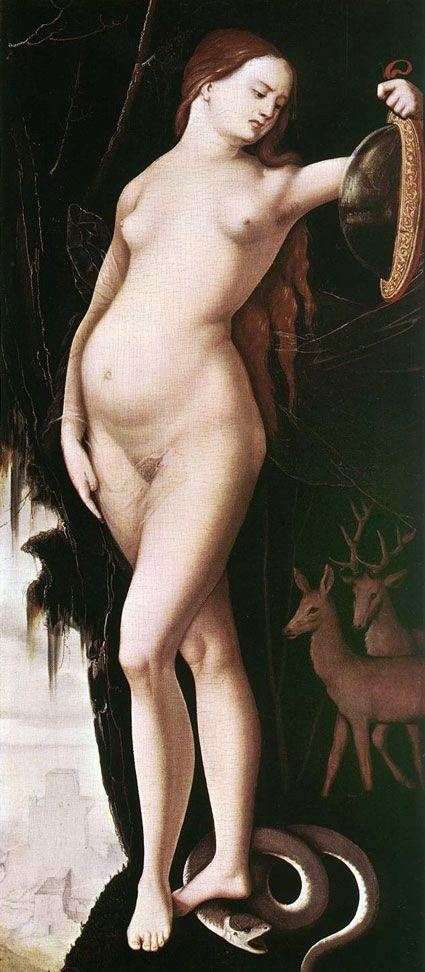 A woman with a mirror and a snake by Hans Baldung
A woman with a mirror and a snake by Hans Baldung Allegory of Music by Hans Baldung
Allegory of Music by Hans Baldung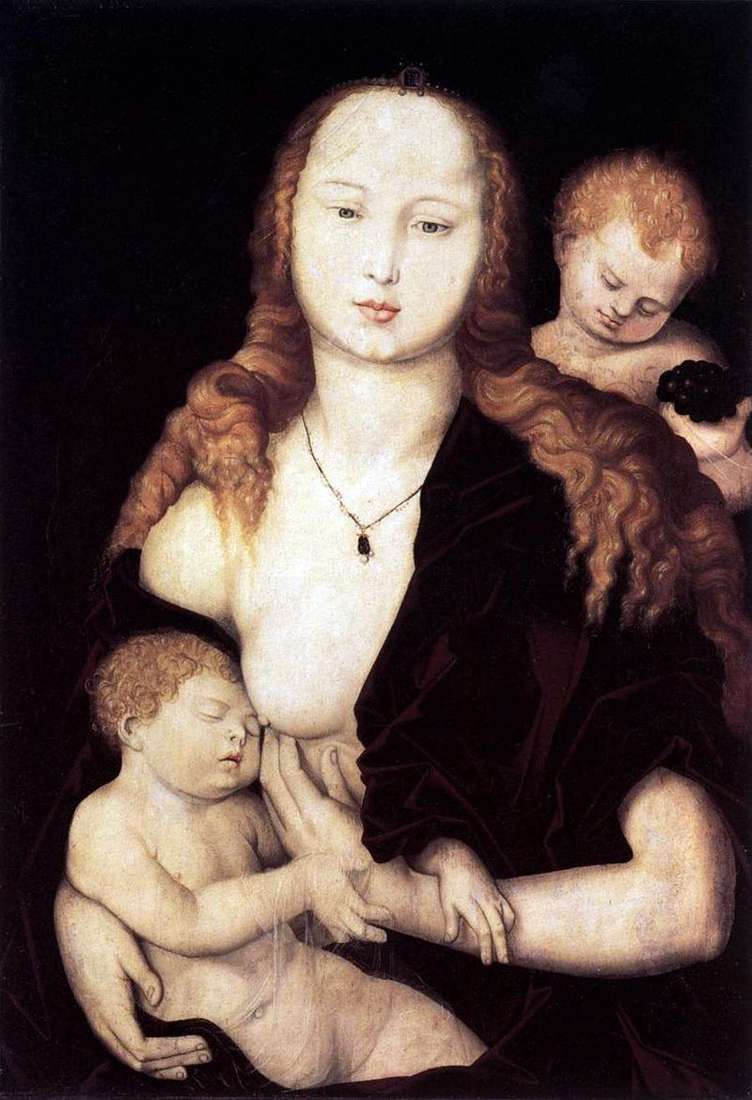 The Virgin and Child by Hans Baldung
The Virgin and Child by Hans Baldung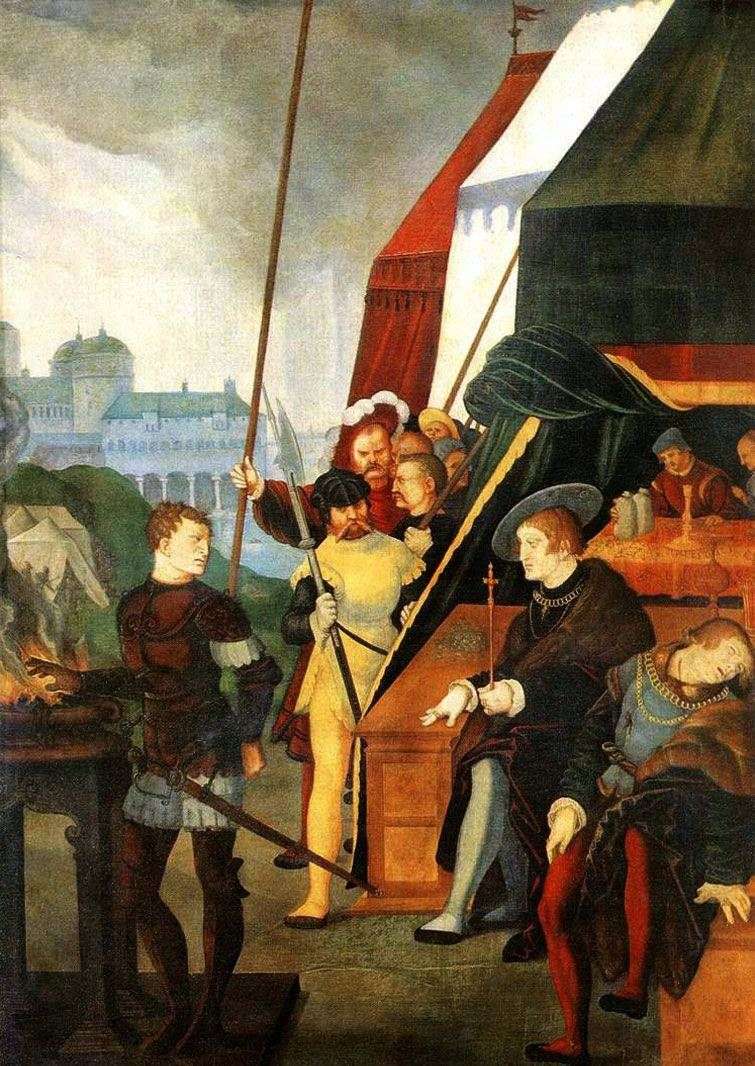 Mutsy Scaevola before King Porsen by Hans Baldung
Mutsy Scaevola before King Porsen by Hans Baldung